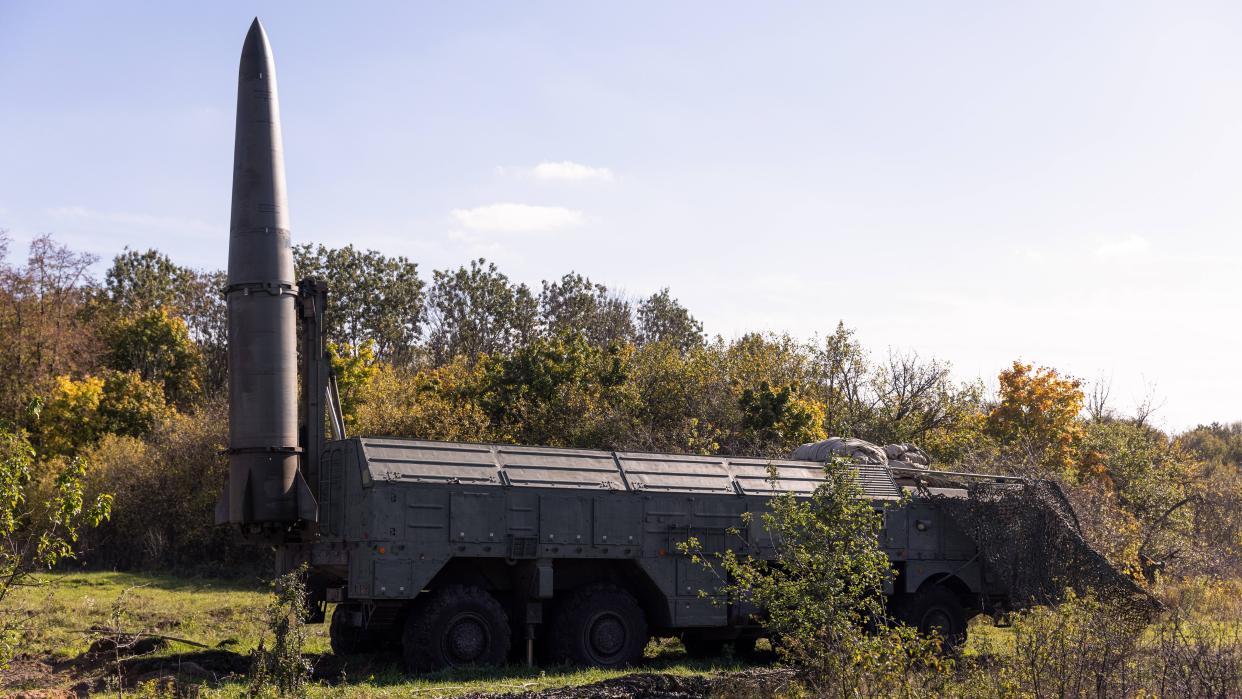On March 25, 2022, Russian President Vladimir Putin announced plans to deploy tactical nuclear weapons to Belarus, a long-standing request by Belarusian leader Aliaksandr Lukashenka. The decision reportedly comes as a response to Britain's decision to supply Ukraine with ammunition containing depleted uranium - a common component of anti-tank ammunitions due to its high density and hardness. However, it is important to note that depleted uranium ammunitions are not classified as nuclear weapons, whereas tactical nuclear warheads are.
To properly assess the implications of this announcement, several important details should be taken into account.
First, Russia will retain ownership and command of these weapons. Consequently, Belarus will not become a nuclear-armed country, and nuclear proliferation will not occur. Russian soldiers stationed in Belarus will be responsible for guarding, maintaining, and operating the deployed nuclear weapons.
Second, the deployment will not happen immediately. A facility capable of storing nuclear warheads is expected to be completed by July 1, 2023, with deployment occurring at an unspecified time afterward. It is unclear whether Russia plans to construct a new storage facility or intends to renovate and use some the old ones Belarus inherited from the Soviet times. After the collapse of the Soviet Union, Belarus inherited 81 SS-25 road-mobile intercontinental ballistic missiles and an unknown number of tactical nuclear warheads. The missiles were stationed in three bases, in Lida, Mozyr and Postavy. The tactical nuclear weapons were removed from Belarus by mid-1993, and the SS-25s were dismantled and removed by November 1996. Since then, Belarus has been a non-nuclear state, and the former nuclear bases have not been used. These facilities likely require major renovation before Russia can use them again. In theory, Moscow could build a new base, but the tight deadline of July 1 makes it more likely that the plan is to renovate one or more of the old bases.
Third, the specific types of tactical nuclear warheads to be stationed in Belarus have not been disclosed. It is also uncertain whether they will be full-fledged weapon systems or simply warheads for various carrying devices.
Currently, at least three types of Russian weapon systems deployed in Belarus could potentially be equipped with nuclear warheads:
- The Iskander ground-to-ground missile, which Russia has been regularly using against Ukraine. Belarus also has a unit equipped with Iskanders, this was announced on February 1 2023, but armed only with conventional warheads.
- The Kh-47M2 Kinzhal air-launched hypersonic ballistic missile. Russia currently stations a few MiG-31 fighter jets in Belarus, which are capable of carrying a Kinzhal. A handful of these weapons have already been used against Ukraine, albeit with conventional warheads.
- The Sukhoi-30SM heavy fighter, deployed to Belarus since September 2021, officially for air patrolling, but these jets can also be made capable of carrying air-launched nuclear missiles.
Fourth, Russia has already stationed numerous nuclear weapons and carrying devices in the Kaliningrad region, including Iskander missiles. From here, they could theoretically cover significant portions of Poland, Lithuania, Latvia, and parts of Estonia, Sweden, and Germany in a full-scale escalation. As such, permanently stationing tactical nuclear weapons in Belarus would not significantly change the regional power balance or threat level. In case of a full-scale war against NATO, Russia would anyway use Belarus as a launch-pad, together with Kaliningrad.
Belarus's constitution previously prohibited the deployment of nuclear weapons within its borders. However, a referendum held on February 27, 2022, led to amendments that removed the requirement for a nuclear-free status and neutrality.
The decision also highlights the diminishing sovereignty of Belarus. Though the deployment of nuclear weapons to a country is not a common occurrence, it was not Lukashenka who announced the decision; nor was it publicized in the framework of a joint press conference, even though the two leaders meet many times a year. Instead, Putin unilaterally declared the deployment, indicating that Belarus is increasingly becoming an object, rather than a subject, of Russia's security and defense policy.
All in all, the significance of the announced deployment should not be overestimated. Even if it occurs, it will not significantly alter the threat level against Ukraine or any NATO country. While the deployment is indeed concerning, there is no immediate cause for panic.
